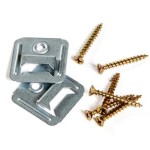Rough Sawn Solid Oak Flooring: A Comprehensive Guide
Rough sawn solid oak flooring represents a unique and increasingly popular choice for homeowners and businesses seeking a distinctive, rustic aesthetic. Unlike traditionally milled and finished flooring, rough sawn oak retains much of its natural texture and character, providing a raw and authentic look. This article will delve into the characteristics, advantages, installation, maintenance, and considerations associated with selecting rough sawn solid oak flooring.
Solid oak flooring, in general, is renowned for its durability, strength, and timeless appeal. Oak is a hardwood species known for its ability to withstand significant foot traffic and resist wear and tear. The “solid” designation indicates that each plank is made from a single piece of oak, as opposed to engineered flooring which consists of a veneer layer over a core material. This solid construction contributes further to the flooring's longevity and stability, allowing it to be refinished multiple times throughout its lifespan.
The defining characteristic of rough sawn oak flooring is its surface texture. The saw marks, often straight or slightly swirling patterns, remain visible and tactile. These marks are a direct result of the milling process, where the planks are cut from the timber log without extensive planing or sanding. This unfinished surface can vary depending on the type of saw used, the speed of the cut, and the type of oak being milled, resulting in a wide range of aesthetic variations.
The choice of oak species also plays a significant role in the final appearance and performance of the flooring. Red oak and white oak are the two most common types used in flooring. Red oak tends to have a more reddish-pink hue and a more open grain pattern. White oak, on the other hand, is typically a lighter shade, ranging from beige to light brown, and has a tighter, more closed grain. White oak is also naturally more resistant to moisture and decay due to its closed cellular structure, making it a preferable choice for bathrooms and kitchens, or areas with higher humidity levels. The structural differences affect not only the visual but also the stability of the flooring in varying climates.
The Appeal of Rough Sawn Aesthetics
The primary draw of rough sawn oak flooring lies in its unique visual appeal. It offers a stark contrast to the smooth, uniform look of traditional flooring options. The visible saw marks and natural imperfections in the wood create a sense of history and authenticity, lending a rustic or farmhouse charm to any space. The flooring can evoke a sense of connection to nature, bringing the outdoors inside. This aesthetic is particularly well-suited for homes with a focus on natural materials, exposed beams, and a more relaxed, less formal design style. Furthermore, its visual texture helps to conceal minor scratches and dents that may occur over time, adding to its durability and timelessness.
Beyond its inherent visual appeal, rough sawn oak flooring offers considerable design flexibility. It can be stained in a variety of colors, from light and airy shades to rich and dark tones, allowing you to customize the flooring to match your specific decor. The flooring can also be sealed with different types of finishes, ranging from matte to glossy, further influencing the final look and feel. The texture of the rough sawn surface enhances the stain, allowing it to settle into the imperfections and create a richer, more complex depth of color. This adaptability makes rough sawn oak a versatile choice for a wide range of interior design styles, from rustic and traditional to modern and industrial.
The texture and visual complexity of rough sawn oak also contribute to its practicality. The slightly uneven surface provides a degree of slip resistance, making it a safer option than highly polished flooring, particularly in areas prone to moisture. This inherent traction is beneficial in homes with children or elderly individuals, and is a consideration in commercial settings with high foot traffic. The natural character of the wood also helps to conceal dust and dirt, maintaining a cleaner look between cleanings.
Installation Considerations for Rough Sawn Oak
Installing rough sawn solid oak flooring requires careful planning and execution. Due to its solid construction, the flooring is susceptible to expansion and contraction with changes in humidity and temperature. Therefore, it is crucial to acclimate the flooring to the environment in which it will be installed for several days prior to installation. This acclimation period allows the wood to adjust to the prevailing conditions, minimizing the risk of warping, cupping, or gapping after installation. The recommended acclimation period is generally between 3 and 7 days, depending on the climate and the moisture content of the wood.
The subfloor preparation is another crucial aspect of the installation process. The subfloor must be level, clean, and dry to provide a stable and secure base for the flooring. Any imperfections in the subfloor can telegraph through the flooring, resulting in unevenness or instability. It may be necessary to sand or fill any dips or bumps in the subfloor to ensure a perfectly flat surface. A moisture barrier should also be installed over the subfloor to protect the flooring from moisture migration, especially in basements or areas with high humidity. The choice of moisture barrier depends on the specific subfloor material and the level of moisture present.
Rough sawn oak flooring can be installed using several methods, including nailing, gluing, or a combination of both. Nailing is the most traditional method and involves using nails or staples to secure the planks to the subfloor. Gluing involves applying an adhesive to the back of the planks and pressing them firmly onto the subfloor. A combination of nailing and gluing provides the most secure and stable installation, particularly for wider planks or in areas with high traffic. Professional installation is recommended to ensure proper acclimation, subfloor preparation, and plank alignment. A professional installer will possess the expertise and tools necessary to achieve a flawless and long-lasting installation.
When installing rough sawn oak, it is important to consider the direction of the saw marks. While some prefer a random pattern, others may opt for a more uniform appearance by aligning the saw marks in the same direction. This is largely a matter of personal preference and can significantly impact the overall aesthetic of the flooring. Furthermore, the width of the planks should be considered in relation to the size of the room. Wider planks can create a more spacious feel in larger rooms, while narrower planks may be more appropriate for smaller areas. The plank width should also be consistent throughout the installation to maintain a cohesive and balanced look.
Maintenance and Care of Rough Sawn Flooring
Maintaining rough sawn solid oak flooring requires a slightly different approach compared to traditionally finished flooring. The textured surface can trap dust and dirt more easily, so regular cleaning is essential to prevent buildup and maintain its appearance. However, harsh cleaning chemicals and excessive moisture should be avoided, as they can damage the wood and alter its finish. The goal is to clean the flooring without saturating it or stripping away the protective sealant.
Regular sweeping or vacuuming is recommended to remove loose debris. A vacuum cleaner with a brush attachment is ideal for reaching into the grooves and crevices of the rough sawn surface. Avoid using vacuum cleaners with beater bars, as they can scratch or damage the wood. For more thorough cleaning, a damp mop with a mild wood cleaner can be used. Ensure that the mop is wrung out thoroughly to prevent excessive moisture from seeping into the wood. Avoid using steam mops, as the high heat and moisture can damage the finish and cause the wood to warp.
The type of finish applied to the rough sawn oak flooring will also influence the maintenance requirements. Oil-based finishes tend to penetrate the wood and provide a more natural look, but they may require more frequent reapplication. Water-based finishes offer greater durability and resistance to wear and tear, but they may not penetrate the wood as deeply. Polyurethane finishes provide a hard, protective layer, but they can alter the natural look of the wood. The choice of finish should be based on the desired aesthetic, the level of traffic the flooring will experience, and the ease of maintenance.
Over time, the finish on rough sawn oak flooring may wear down, particularly in high-traffic areas. To restore the finish and protect the wood, it may be necessary to reapply the finish periodically. The frequency of reapplication will depend on the type of finish used and the level of wear and tear the flooring experiences. Before reapplying the finish, the flooring should be thoroughly cleaned and any loose debris removed. A light sanding may also be necessary to create a smooth surface for the new finish to adhere to. Professional refinishing is recommended for significant wear or damage.
Protecting rough sawn oak flooring from scratches and dents is crucial to maintaining its appearance. Place mats at doorways and rugs in high-traffic areas to prevent dirt and debris from being tracked onto the flooring. Use furniture pads under the legs of chairs and tables to prevent scratches. Avoid wearing shoes with high heels or cleats on the flooring, as they can cause significant damage. Promptly clean up any spills to prevent staining or water damage. With proper care and maintenance, rough sawn solid oak flooring can provide years of beauty and enjoyment.

Wide Plank Rustic Hardwood Flooring Gaylord

Rough Sawn Hardwood Flooring Floorboards

Reclaimed Rough Cut Pine Flooring Rustic Roots

Wide Plank Rustic Hardwood Flooring Gaylord

Circle Sawn Reclaimed Hardwood Floors E T Moore

Why Rough Sawn Lumber Texture Is Great For Wood Floors

Rough Sawn Wide Planks Wood Flooring Rustic Floors Plank

Montana Buckboard Fir Hardwood Flooring Wide Plank Floor

Circle Sawn Fir Flooring Douglas Stonewood S

Rough Sawn Douglas Fir Flooring Sustainable Lumber Company Farmhouse Rustic Wood Floors
Related Posts








